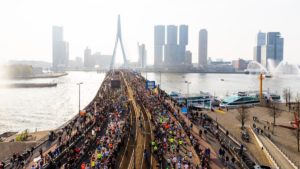Trail running can be an incredibly rewarding form of exercise, but depending on the terrain, it can also be quite dangerous without the proper shoes. Trail shoes not only give you more grip on whatever surface you are running on, but they are also engineered to help protect your feet and ankles while you are out enjoying the trails.
Why Buy Trail Shoes?
When considering trail shoes, think of them like winter tires; while it may be entirely possible to make it through winter driving without them, having them adds another level of safety and comfort to your drive. Trail shoes are very similar. While it is possible to run trails in street shoes, the risk of falling or getting hurt increases, especially as the terrain gets more and more difficult.
By investing in the proper shoes, runners can feel just as sure-footed on the trails as they do on the street. Having an extra layer of confidence while trail running will make your runs a lot more enjoyable.
Choosing The Right Trail Shoes
These days, there are a lot of different trail shoes to choose from, in all different styles. So how do you know which will work best for you? Some things to consider when choosing a trail shoe are:
- Take into consideration the trails you plan on running. Someone who runs across mountain ridges will likely need a much more aggressively-treaded shoe than someone who is running relatively flat forest trails.
- Understand your gait. Do you usually wear a neutral runner on the road, or do you wear a support shoe? Knowing your gait is very important when picking a running shoe of any kind.
- Cushioning. There is no right or wrong answer to this, it comes down to a matter of personal preference. Some runners prefer a very cushioned shoe, to take as much shock out of their legs as possible. Others prefer a shoe with minimal cushioning, so they can feel the trail under their feet. Try a few different styles to see what you prefer on your runs.
- Make sure they are the right size. Sizing is important with every shoe, but especially so with trail shoes. Because you will likely be running up and down hills, you want a shoe that is snug enough that it can’t move around, but not so tight that your feet are squeezed in the entire time. The proper shoe should have roughly a finger’s width of space in front of your big toe, to allow your feet to swell a little bit. Make sure that your heel can’t move around inside the shoe. If it can, you likely end up with blisters all over the heels of your feet. If your heel can move around when you try it on in the store, it will move a whole lot more when running up or down a hill.
Caring For Your Trail Shoes
Since trail shoes usually take more of a beating than street shoes, you must take proper care to get the most life out of them. For starters, try not to wear them on road runs. This will wear out the treads prematurely, as trail shoes usually have a much softer tread than street shoes do.
When you come back from a run, try to clean as much mud and dirt off them as possible, before it completely dries. If your shoes are wet, dry them out as soon as you get home. Stuffing newspaper inside is a great way to draw the moisture out quickly. Putting your shoes away wet can cause mold and mildew issues, which will also cause the materials in your shoes to break down and fall apart quicker than they should. The better you treat them, the longer they’ll last.
If you’re curious to try trail running but haven’t got the shoes for it, this guide should give you a pretty good idea of what to look for at your local shoe store. As with buying any shoe, it may take a couple of pairs before you discover a shoe that feels like an extension of your feet. Once you do though, trail running can be one of the most rewarding forms of running.






